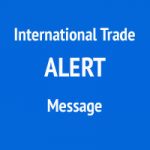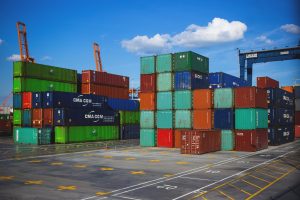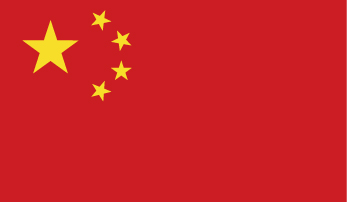 Import Tariff and Exemptions
Import Tariff and Exemptions
On March 8, 2018, the President issued proclamations 9704 and 9705 on regulating imports of steel and aluminum into the United States, under Section 232 of the Trade Expansion Act of 1962. The tariff provides for extra import obligations for steel mill and aluminum articles, effective March 23, 2018. US Trade Representative, Robert Lighthizer, announced that certain countries will have temporary tariff exemptions while they negotiate with the United States. The areas included on the list are the European Union, Argentina, Australia, Brazil and South Korea. The president had already granted exemptions to Mexico and Canada when he signed the tariffs earlier last month.
Controversy With the EU
 Trump’s tariffs had initiated dispute among European officials, who petitioned hard for an exemption, mentioning the continent’s long-standing military cooperation and close economic ties to the United States. The European Commission had threatened to strike back by forcing trade penalties on a long-list of American goods, worth up to $3.4 billion in annual trade. Though Trump has continually singled out China for unfair trade practices, the European Union appeared to lose more than Beijing from U.S. steel and aluminum tariffs. This is due primarily because the European Union is one of the biggest sources of U.S. steel imports. The 28-nation bloc distributed 5.3 million metric tons of steel to the U.S. in 2017, ranking second to Canada.
Trump’s tariffs had initiated dispute among European officials, who petitioned hard for an exemption, mentioning the continent’s long-standing military cooperation and close economic ties to the United States. The European Commission had threatened to strike back by forcing trade penalties on a long-list of American goods, worth up to $3.4 billion in annual trade. Though Trump has continually singled out China for unfair trade practices, the European Union appeared to lose more than Beijing from U.S. steel and aluminum tariffs. This is due primarily because the European Union is one of the biggest sources of U.S. steel imports. The 28-nation bloc distributed 5.3 million metric tons of steel to the U.S. in 2017, ranking second to Canada.
How Will This Affect Consumers?
American consumers could end up paying more money from President Donald Trump’s oath to enforce tariffs of 25% on imported steel and 10% on imported aluminum. The proposal is anticipated to help U.S. steel and aluminum manufacturers that have long complained about unfair competition from overseas. However, for American consumers it may not be so simple. As a result, U.S. industry influencers say consumers could face higher costs for trucks and automobiles, beer and soft drinks, canned goods and more. At minimum, these tariffs will upset those firms, industries, regions, and states that depend on steel and aluminum imports, which is still a moderately small segment of U.S. trade, as of today. However, if trade partners answer with their own punitive tariffs on a wider set of export industries, exposure to the latest Trump trade shock will spread.
Additional comments from CNBC are here:
https://www.cnbc.com/2018/03/22/trump-to-exempt-eu-from-steel-and-aluminum-tariffs-us-trade-rep.html
A complete list of EU member states is here:
https://ec.europa.eu/taxation_customs/national-customs-websites_en
The request for exclusion of steel imports included under the Section 232 tariffs are here:
https://www.bis.doc.gov/index.php/232-steel
For steel, these are the HTSUS codes included: For the purposes of this proclamation, “steel articles” are defined at the Harmonized Tariff Schedule (HTS) 6 digit level as: 7206.10 through 7216.50, 7216.99 through 7301.10, 7302.10, 7302.40 through 7302.90, and 7304.10 through 7306.90, including any subsequent revisions to these HTS classifications.
The request for exclusion of aluminum imports included under the Section 232 tariffs are here:
https://www.bis.doc.gov/index.php/232-aluminum
For aluminum, these are the HTSUS codes included: For the purposes of this proclamation, “aluminum articles” are defined in the Harmonized Tariff Schedule (HTS) as: (a) unwrought aluminum (HTS 7601); (b) aluminum bars, rods, and profiles (HTS 7604); (c) aluminum wire (HTS 7605); (d) aluminum plate, sheet, strip, and foil (flat rolled products) (HTS 7606 and 7607); (e) aluminum tubes and pipes and tube and pipe fitting (HTS 7608 and 7609); and (f) aluminum castings and forgings (HTS 7616.99.51.60 and 7616.99.51.70), including any subsequent revisions to these HTS classifications.
 Additional Details Regarding China Imports
Additional Details Regarding China Imports
Also, as reported in Wednesday’s International Trade Alert, here is some updated information regarding tariffs on imports from China
The full USTR statement is here:
https://ustr.gov/about-us/policy-offices/press-office/press-releases/2018/april/under-section-301-action-ustr
The list of proposed commodities are on pages 14-58 here, while the comment procedure is on pages 1-2:
https://ustr.gov/sites/default/files/files/Press/Releases/301FRN.pdf
How Can We Help?
We can review your current list of imported commodities to determine if they fall under Section 323 in order for you to accurately determine your landed costing and make better sourcing decisions.

